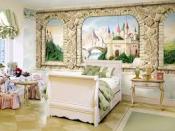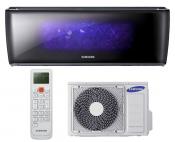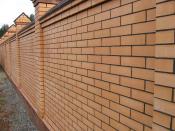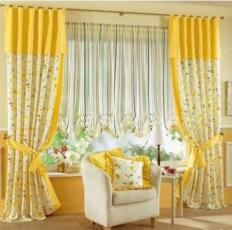Search
Login
Cornice in the interior, types of cornices, how to hang a cornice
The window - the person entering the room casts a first glance at it. Naturally, its design should not be impeccable - all the mistakes made will definitely be noticed and can spoil the overall impression of the decorative interior. To avoid such an unpleasant phenomenon, it will be necessary to pay attention to the selection of fabrics for sewing curtains and devices for their fastening, i.e. cornices. Here you will definitely need to find a reasonable compromise between the requirements that apply to combining the curtain fabric itself with a cornice and matching the cornices with the chosen style of the room design.
Content:
- Types of curtain rods, their classification video
- Features of ceiling cornices video
- Wooden cornices in a modern interior
- Cornices made of metal
- Advantages and disadvantages of plastic cornices
- Cornice string
- Flexible cornices
- Baguettes for cornices
- How to hang a curtain rod
- How to mount curtain rods on drywall walls
- If the cornices are installed in the cavity of the stretch ceiling
Types of curtain rods, their classification

If we talk about the professional evaluation of cornices, then they can be divided:
- According to the material of manufacture, they can be wooden, plastic, metal, or combined. Of the many varieties of cornices, it will not be difficult to choose those that are ideally suited to different styles of interior, for example, with chalets, country, ethnic styles, wooden cornices will be best combined. Metal or plastic, or a combination of these two materials will most organically fit into a loft or contemporary, a vintage or minimalist interior, will be appropriate in a room decorated in the style of modern eclecticism.
- According to the method of fastening, they can be wall mounted or placed on the ceiling. When choosing a mounting method, it should be noted that the cornices fixed to the ceiling will contribute to a visual increase in the height of the room. In rooms with high ceilings, wall-mounted cornices can be used.
- In appearance, they can have a round shape, be baguette, profile strings.
To make the right decision when choosing curtain rods for a certain room, you can use some tips from experienced designers, which contain more detailed information on options for creating successful combinations of different types of curtain rods and curtains made of different materials.
The popularity and prevalence of wall cornices is quite justified - it is very easy to install them, in the interior of any type they look very attractive.
Features of the use of ceiling cornices
Ceiling cornices are usually used in cases where the space of the room requires correction, with their help it is possible to achieve a visual expansion of the space. By design, they represent a profile of a certain type along which clothespins for attaching curtains move, and a baguette, which serves to decorate this system.

Since baguette products are presented in a very wide assortment in specialized construction stores, it will not be difficult to select a model that will suit a certain interior and satisfy all the requirements of the premises owners.

Those who prefer comfort and convenience can be advised to pay attention to electric curtain rods. They are a fairly simple device made of aluminum profile, the position of the curtains is adjusted using an electric drive mechanism, without any extra effort. Such a device will be especially valuable in rooms with high ceilings, when the cornice is installed at a height significantly exceeding the height of a person.
You can find out how to install a ceiling cornice by watching the video:
Wooden cornices in a modern interior

Most likely wooden cornices can be attributed to classic ones; they can be used in different interior styles. Differ in special durability and reliability since the material of their manufacture is dense wood, most often used:
- oak,
- cherry,
- expensive softwood materials.
Cornices made of wood can be double-row or single-row, they look most harmonious in combination with linen or cotton curtains, in particular in ethnic interiors.
Cornices made of metal
The metal surface of the cornices will look attractive if you use textiles of very different quality and texture. The main advantage of metal products is their extreme strength and ability to withstand any weight, i.e. even heavy, dense cloth panels can be used as curtains.

Forged metal cornices look especially stylish and attractive; they fit into the interior, giving it special luxury and charm, emphasizing the severity of the classic style. Especially effective in the case of using French or Austrian curtains, which are often used to create a baroque interior.
Advantages and disadvantages of plastic cornices
Modern inexpensive replacement for metal and wooden cornices - plastic products. They differ:
- wide color gamut
- diverse design
- ease of installation
- resistance to moisture,
- affordable cost.
Plastic cornices are usually used to create minimalist or modern interiors; they look great with curtains made of translucent, lightweight fabrics.

Do not forget that plastic has a lower strength than wood or metal, so when choosing fabric for curtains, you will need to consider its weight. The second drawback of plastic products is their tendency to burn out, products made of light plastic lose color more actively, dark, with a sub-wood color, retain decorativeness for much longer.
Cornice string
This type of eaves cannot be attributed to especially strong and reliable; their attractiveness lies in the versatility, the possibility of mounting to the ceiling or wall. The design of the cornice string is quite simple, it is a cable and fasteners designed to fix it on the surface of a wall or ceiling.

Such cornices can have a different number of strings, but the two-row cornice is most often used.
You can install string cornices in different types of interior, but designers do not recommend using them in combination with rich interiors such as baroque, classic or neoclassical, rococo - they will look somewhat rustic.
If you plan to install strings, then the material for the curtains should choose lightweight fabrics - it is not recommended to create an excessive load on the cornices.
Flexible cornices
The most interesting type of curtain rods are systems made from a flexible aluminum base. It is its flexibility that makes it possible to give structures quite interesting and unusual forms.

Such designs are sufficiently durable, they are usually used for fastening curtains with lambrequins. The fastening of this design is usually performed to the ceiling.
Baguettes for cornices
The need for baguettes arises if the designer wants to hide the curtain mounting system. The baguette is a fairly wide plank made of wood or plastic, decorated with carvings, ornaments or fabric that blends well in color with the wallpaper.

To give the interior a modern touch, baguettes with built-in LED lights are used; their soft light brings romantic notes to the interior. Curtains made of different types of fabrics go well with baguettes, the main thing is that the curtains fit well into the interior of the room.
How to hang a curtain rod
Having chosen curtains and cornices suitable for the interior, you can proceed with installation work. Perform them after finishing the ceilings. This task is not difficult, having some skills in handling construction tools, you can cope with it on your own.

To work, you need to prepare:
- tape measure and pencil
- drill,
- wood or metal hacksaw,
- stepladder
- screwdriver or screwdriver,
- ordinary building level
- screws and dowels.
When installing, remember:
- walls made of fragile materials will require the use of dowels,
- if it turns out that the length of the cornice exceeds 2 m. then you will need to mount it on the edges and in the central part,
- the length of the cornice should allow in the daytime to completely remove the curtains and open the window opening,
- fastening of roller blinds is carried out directly to the window frame,
- the cornice should be located at least 5 cm above the top line of the window opening - otherwise it may block the opening of the window,
- curtains hung on a cornice should not lie on a windowsill, touch window handles or heating radiators.
You can only start work by making sure that the wiring cables do not pass in the area of \u200b\u200bthe cornice. For diagnosis, a special indicator should be used.
how to install round ledges
In most cases, such cornices are an element of the decor of the room, they do not overlap with curtains, tulle and curtains are hung on them on rings. You can install such cornices on the ceiling or on the walls, such models are usually equipped with fixing materials. But in the case of loose walls, you will need to use large dowels and screws.

How to hang a cornice - the order of the work:
- mark the place for mounting brackets,
- mark the points where the dowels will be located,
- after installing the dowels using self-tapping screws we fasten the bracket,
- we insert the rod of the cornice into the fixed bracket, put rings on it, then the second bracket, we fasten it in the marked place to the wall using self-tapping screws.
On the bar, it is recommended to leave two rings behind the brackets - they will serve to fix the curtains on the sides. The edges of the rod will need to be decorated with decorative tips.
how to install a rail or profile cornice
The rail cornice owes its name to the presence of sliding rollers in its design. Rail cornices are made from a wide variety of materials, depending on their strength they are designed for different types of curtains, for example, the most durable, steel structures can withstand the severity of large curtains made of thick, dense fabrics. Lightweight plastic cornices are most often used for hanging tulle; aluminum is used for bay windows.

Rail cornices come to the distribution network as measuring segments of standard length, but you can shorten them with a hacksaw. The standard kit that comes with these ledges includes:
- runners
- rollers,
- limiters
- fasteners - screws.
When sawing rails, it should be laid up flat side.
Installation on the ceiling is performed in the following order:
- at least 10 cm should be retreated from the wall, if there are protruding pipes or heating radiators - more indentation is required,
- marks are made on the rail every 25 cm,
- the rail is applied to the ceiling along the marked line, then you will need to drill holes, and attach the profile to the ceiling with screws (screws can also be used for fastening)
- further, rollers are inserted into the grooves of the rails, hooks are hung, limiters are installed.

The design of profile cornices may include the presence of one row or several rows of runners, in addition, cornices of this type allow the installation of devices for adjusting curtains, i.e. lifting them or shifting to the sides.
You can attach profile cornices to both ceilings and walls.
how to hang a ceiling cornice string
Let us remind once again that ceiling eaves-strings are intended exclusively for hanging curtains made of light materials, an increased load will lead to sagging strings. You can install the strings on the wall or ceiling.
The installation technology of the cornice string is as follows:
- determine the installation location
- having attached the mounting base to the surface of the ceiling or wall, we mark the installation points of the screws,
- make sure the marks are correct (they must define a horizontal line or a line parallel to the wall),
- we drill holes and install dowels, using screws we fix the fasteners,
- after that, you will need to stretch the string using the tensioner on the mount.

It should be noted that installing strings in rooms with high humidity is far from the best option, ordinary strings will quickly be covered with a layer of rust. It will be more rational to use strings made of stainless metals or polymers.
Similarly, other types of cornices are installed on walls or ceilings.
How to mount curtain rods on drywall walls
Since drywall is not particularly durable, it will be necessary to think over the places for attaching decor items, including cornices, in advance. In the process of installing drywall on the walls, it should be strengthened by installing an additional metal profile or wooden lath on the inside of the sheets - screwing screws into an unprepared wall can cause it to begin to deteriorate even from the weight of the cornice itself.

In extreme cases, if it is impossible to strengthen the drywall, special butterfly dowels can be used as fasteners. They open under the influence of screw-in screws. This method of fastening is considered more reliable, but the load on the cornices with such a fastening should not exceed 5-8 kg.
If the cornices are installed in the cavity of the stretch ceiling

It should be noted that this work is not particularly difficult, but it requires special care and accuracy, the mistakes made can only be corrected by dismantling. The work is carried out in the same order as when installing the cornice on a normal ceiling, the peculiarity is that the installation of the cornice and the installation of the ceiling will have to be performed in parallel.





